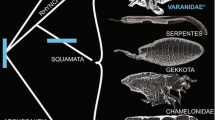Abstract
Robert Hooke (1635–1703) was a polymath who made important contributions to respiratory physiology and many other scientific areas. With Robert Boyle, he constructed the first air pump that allowed measurements on small animals at a reduced atmospheric pressure and this started the discipline of high altitude physiology. He also built the first human low pressure chamber and described his experiences when the pressure was reduced to the equivalent of an altitude of about 2400 m. Using artificial ventilation in an animal preparation he demonstrated that movement of the lung was not essential for life. His book Micrographia describing early studies with a microscope remains a classic. He produced an exquisite drawing of the head of a fly showing the elaborate compound eye. There is also a detailed drawing of a flea, and Hooke noted how the long, many-jointed legs enable the insect to jump so high. For 40 years he was the curator of experiments for the newly founded Royal Society in London and contributed greatly to its intellectual ferment. His mechanical inventions covered an enormous range including the watch spring, wheel barometer and the universal joint. Following the Great Fire of London in 1666 he designed many of the new buildings in conjunction with Christopher Wren. Unfortunately Hooke had an abrasive personality which was partly responsible for a lack of recognition of his work for many years. However during the last 25 years there has been renewed interest and he is now recognized as a brilliant scientist and innovator.
Access this chapter
Tax calculation will be finalised at checkout
Purchases are for personal use only
Similar content being viewed by others
References
Bennett JA, Cooper M, Hunter M, Jardine L. London’s Leonardo: the life and work of Robert Hooke. Oxford: Oxford University Press; 2003.
Birch T. The history of the Royal Society of London; 1756–1757.
Block P, DeJong M, Ochsendorf J. As hangs the flexible line: equilibrium of masonry arches. Nexus Network J. 2006;8:13–24.
Boyle R. New experiments physico-mechanicall, touching the spring of the air, and its effects (made, for the most part, in a new pneumatical engine) written by way of letter to the Right Honorable Charles Lord Vicount of Dungarvan, eldest son to the Earl of Corke. Oxford: H. Hall; 1660.
Boyle R. New experiments physico-mechanical, touching the air: whereunto is added a defence of the authors explication of the experiments, against the objections of Franciscus Linus and Thomas Hobbes. Oxford: H. Hall; 1662.
Chapman A. England’s Leonardo: Robert Hooke and the art of experiment in Restoration England. Proc Royal Inst Gt Br.1996;67:239–75.
Chapman A. England’s Leonardo: Robert Hooke and the seventeenth-century scientific revolution. Philadelphia: Institute of Physics; 2005.
Cooper M, Hunter M. Robert Hooke: tercentennial studies. Burlington: Ashgate; 2006.
Harvey W. An anatomical disquisition of the motion of the heart and blood in animals. Cambridge, 1649. In: The works of William Harvey (translated by R. Willis). Philadelphia, University of Pennsylvania Press; 1939:136.
Hooke R. Micrographia: or some physiological descriptions of minute bodies made by magnifying glasses with observations and inquiries thereupon. Royal Society of London; 1665.
Hooke R. An account of an experiment made by Mr. Hook, of preserving animals alive by blowing through their lungs with bellows. Phil Trans R Soc Lond. 1667;2:539–40.
Hooke R. A description of helioscopes and some other instruments. London. TR for John Martyn; 1676.
Hooke R. Microscopic observations, or Dr. Hooke’s wonderful discoveries by the microscope. London: print for Robert Wilkinson; 1780.
Inwood S. The forgotten genius: the biography of Robert Hooke 1635–1703. San Francisco: MacAdam/Cage; 2003.
Kent P, Chapman A. Robert Hooke and the English renaissance. Leominster: Gracewing; 2005.
Keynes G. A bibliography of Dr. Robert Hooke. Oxford: Clarendon Press; 1960.
Lower R. Tractatus de Corde. Item de motu & colore sanguinis et chyli in eum transitu, translated by K.J. Franklin. London; 1669. In: Early Science in Oxford, Vol. XI, edited by R.T. Gunther. Oxford; 1935.
Robinson, HW, Adams, W. editors. The diary of Robert Hooke, M.A., M.D., F.R.S., 1672–1680. London: Taylor & Francis; 1968.
Schott GP. Gasparis Schotti Mechanica Hydraulico-Pneumatica. Francofurti ad Moenum: Sumptu Heredum Joannis Godefridi Schönwetteri Bibliopol. Francofurtens, excudebat Henricus Pigrin, Typographus Herbipoli; 1657.
West JB. The original presentation of Boyle’s Law. J Appl Physiol. 1999;87:1543–5.
West JB. Robert Boyle’s landmark book of 1660 with the first experiments on rarified air. J Appl Physiol. 2005;98:31–9.
West JB. Torricelli and the ocean of air: the first measurement of barometric pressure. Physiology (Bethesda). 2013;28:66–73.
Author information
Authors and Affiliations
Corresponding author
Rights and permissions
Copyright information
© 2015 American Physiological Society
About this chapter
Cite this chapter
B. West, J. (2015). Robert Hooke: Early Respiratory Physiologist, Polymath, and Mechanical Genius. In: Essays on the History of Respiratory Physiology. Perspectives in Physiology. Springer, New York, NY. https://doi.org/10.1007/978-1-4939-2362-5_6
Download citation
DOI: https://doi.org/10.1007/978-1-4939-2362-5_6
Published:
Publisher Name: Springer, New York, NY
Print ISBN: 978-1-4939-2361-8
Online ISBN: 978-1-4939-2362-5
eBook Packages: Biomedical and Life SciencesBiomedical and Life Sciences (R0)




